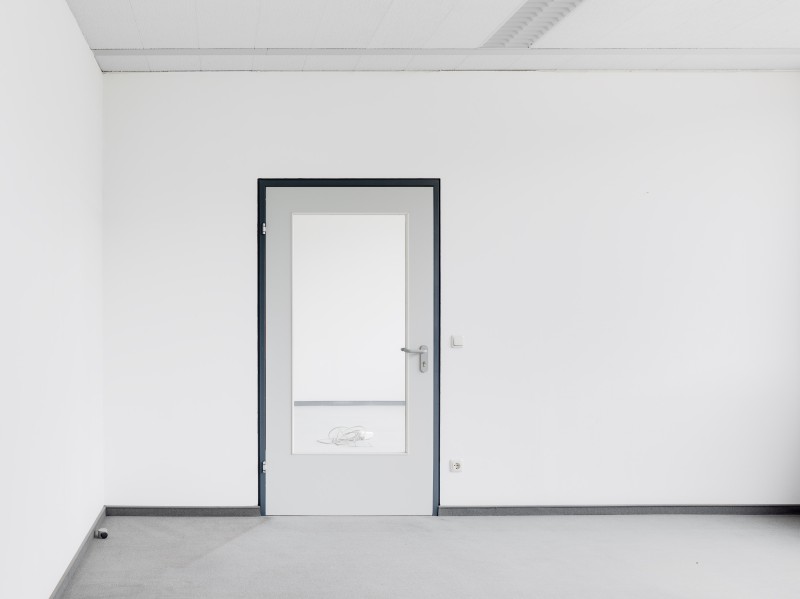
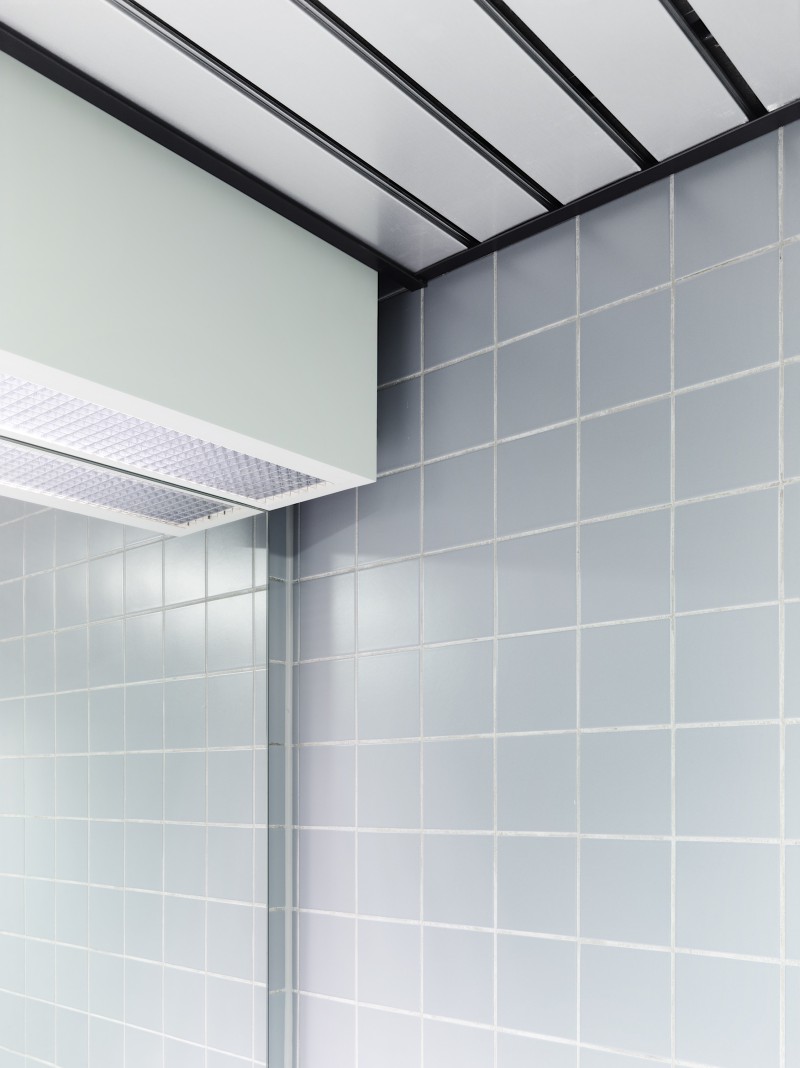
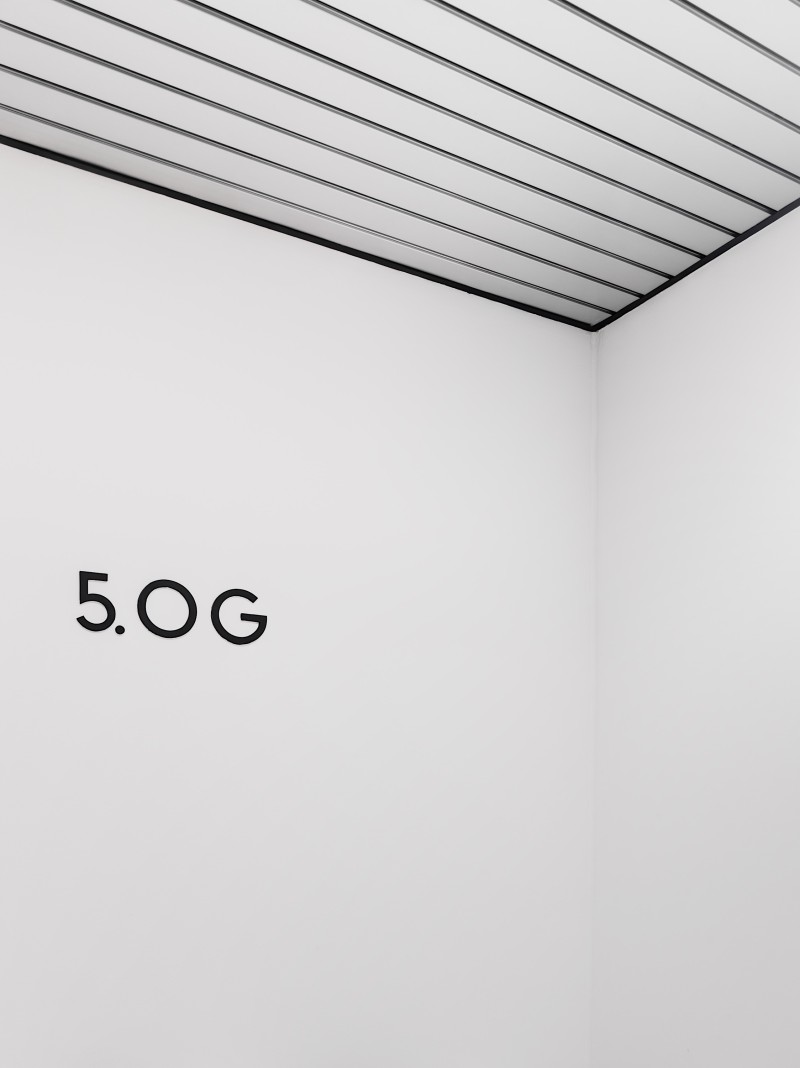
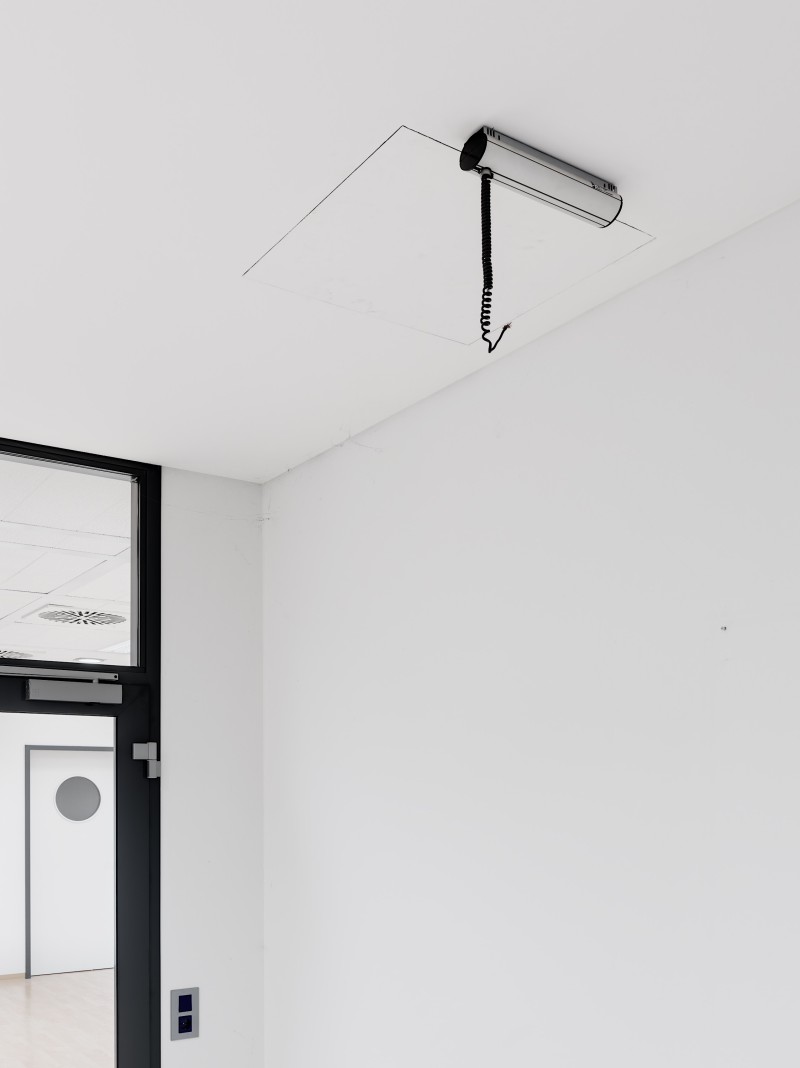
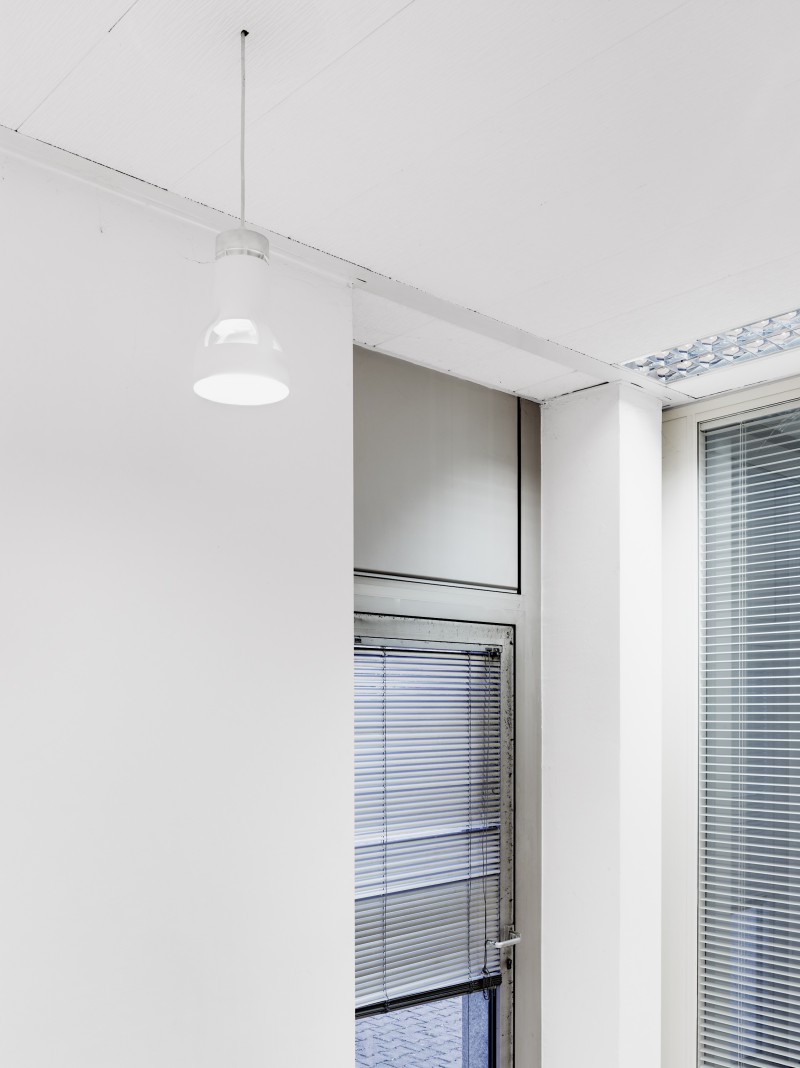
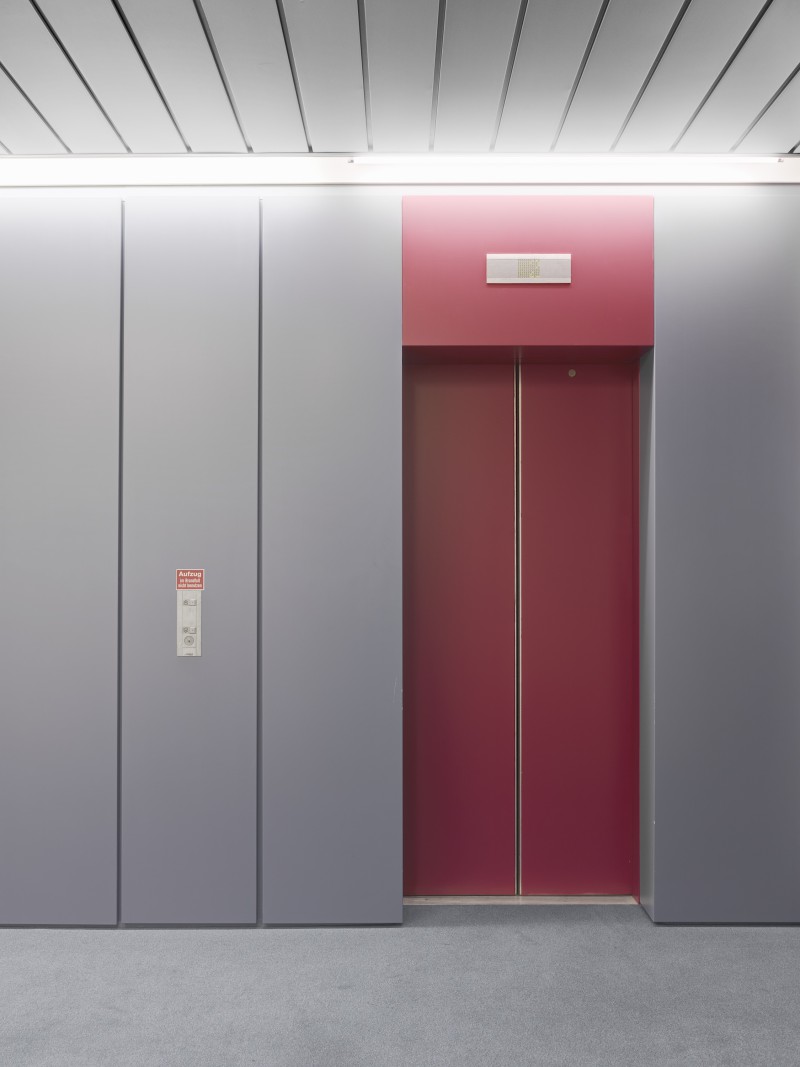
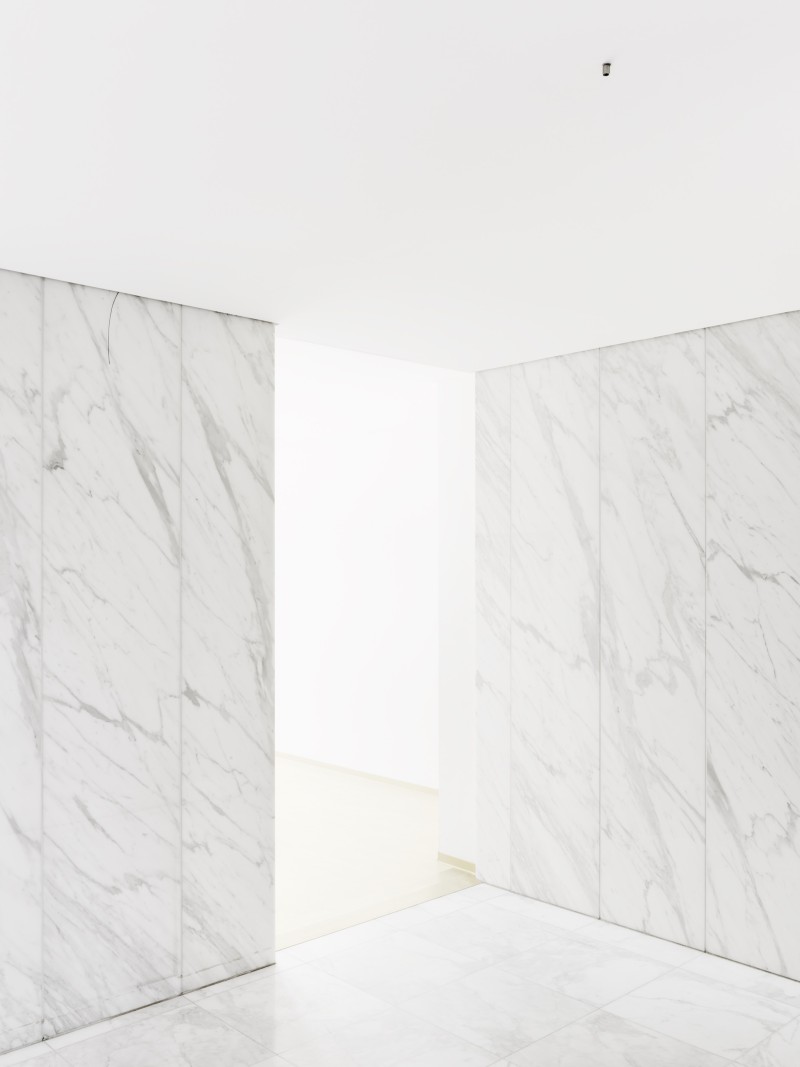
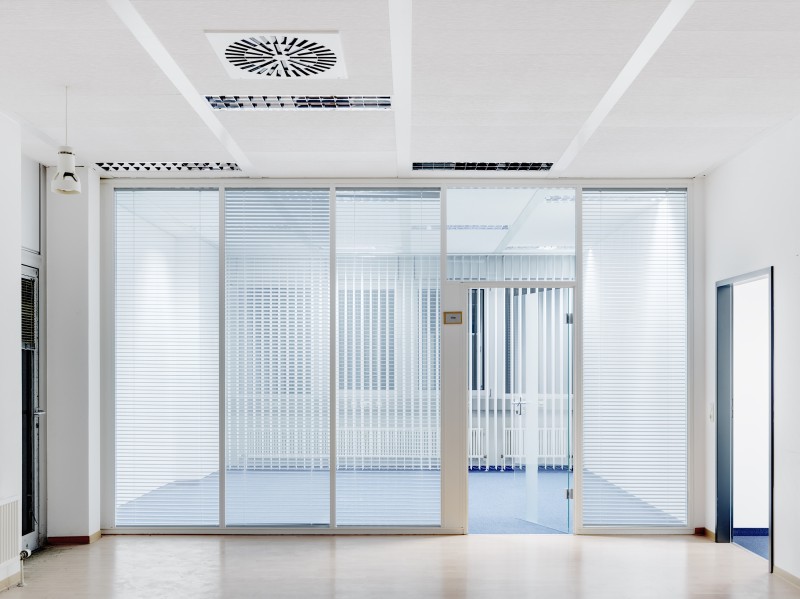
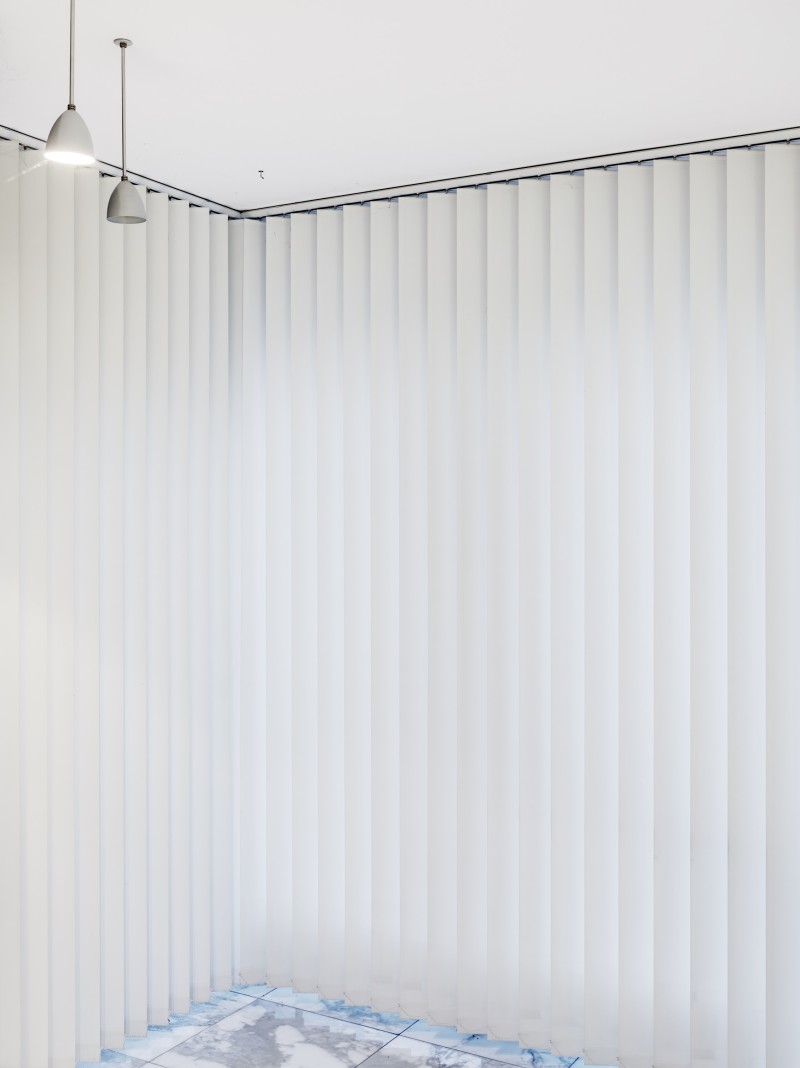
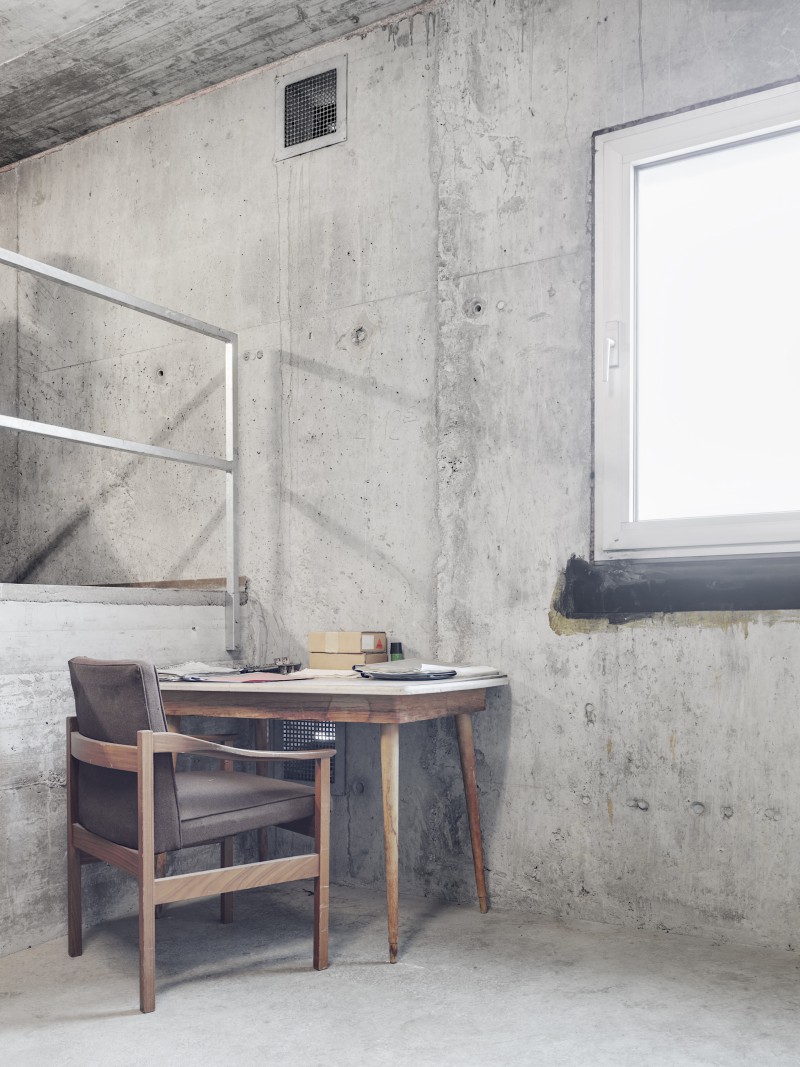
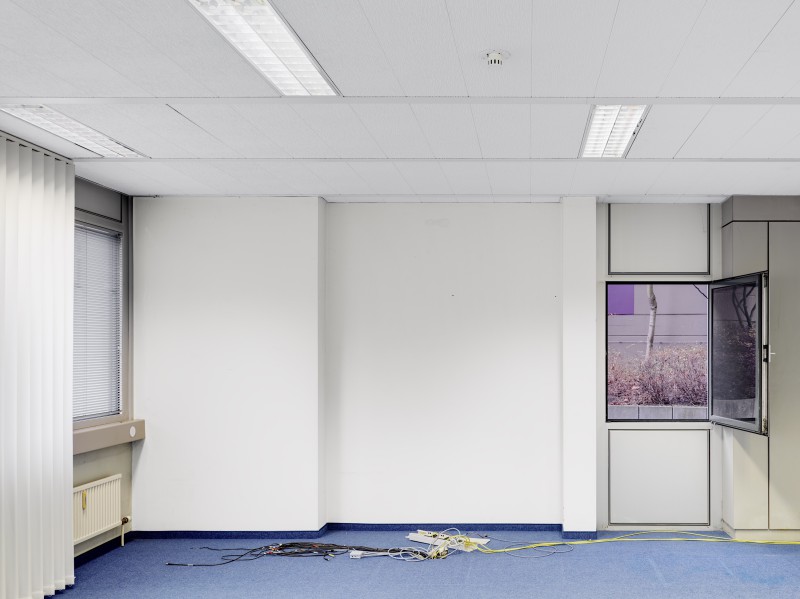
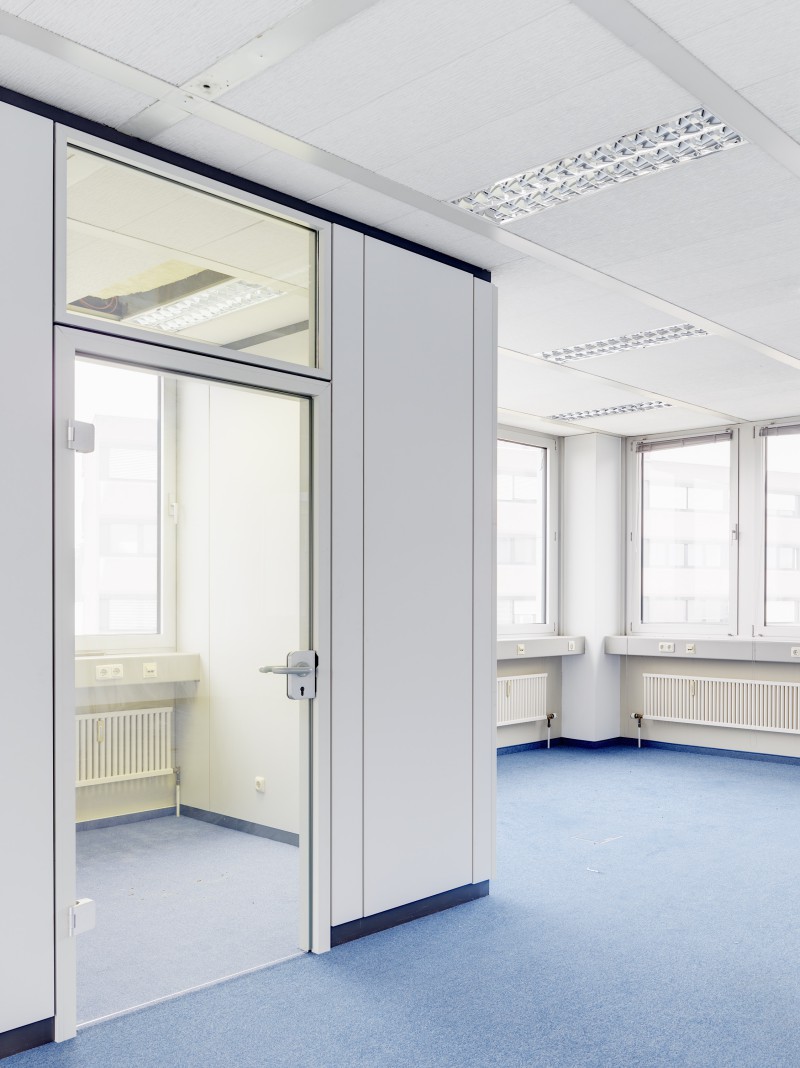
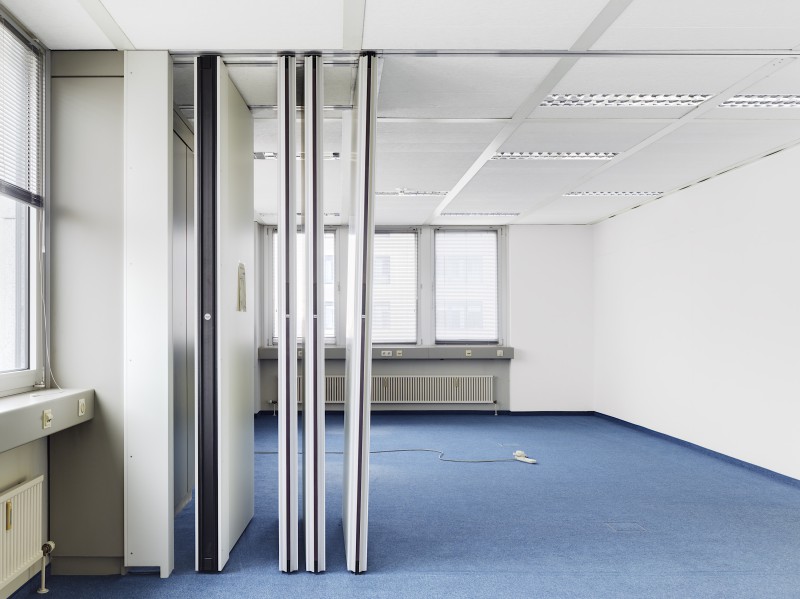
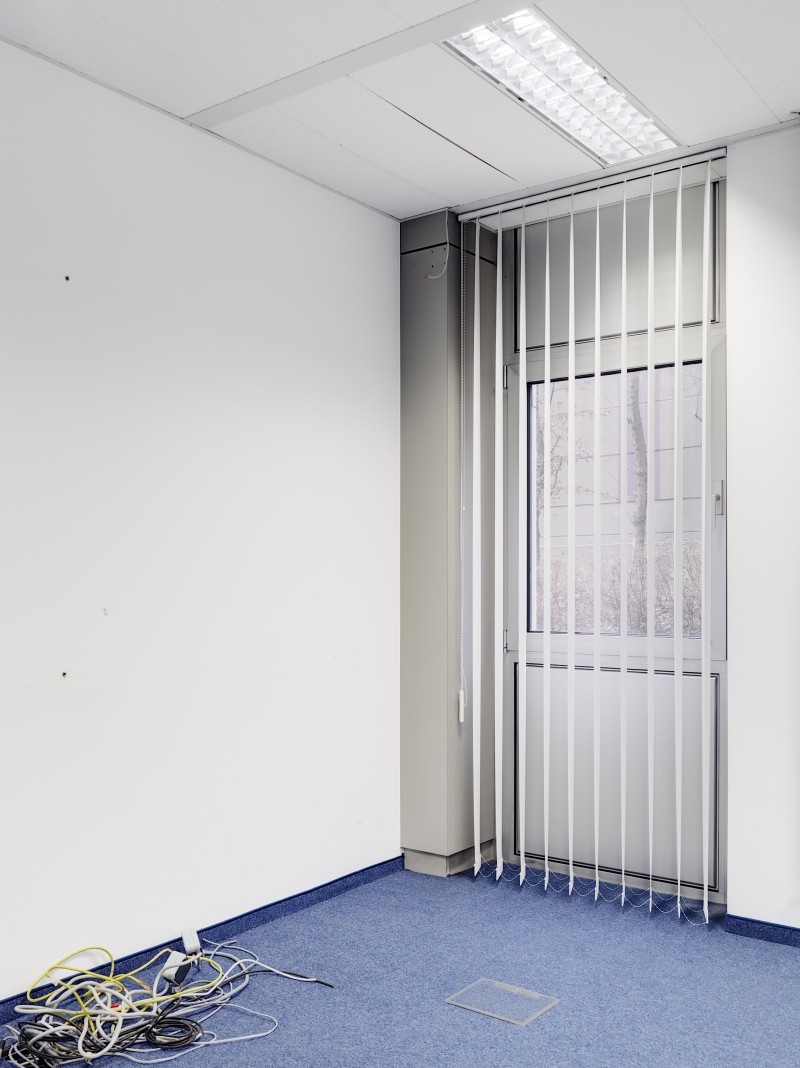
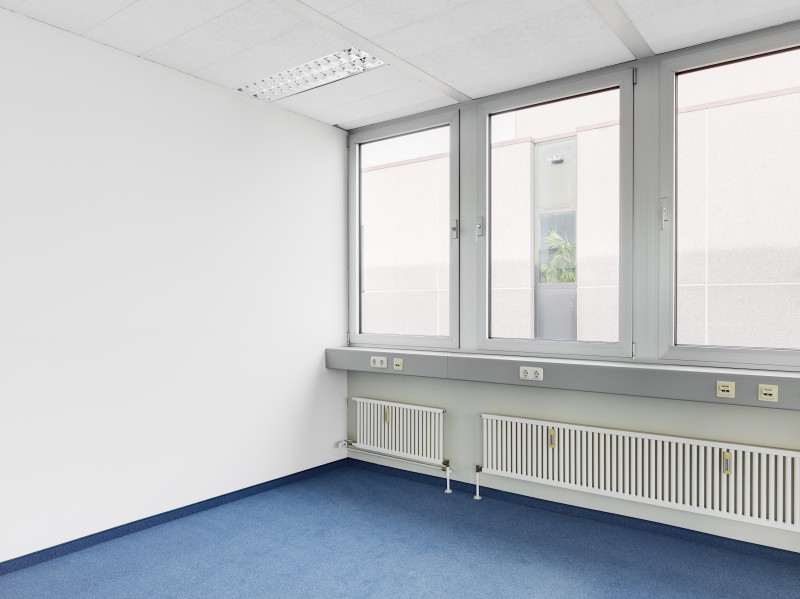
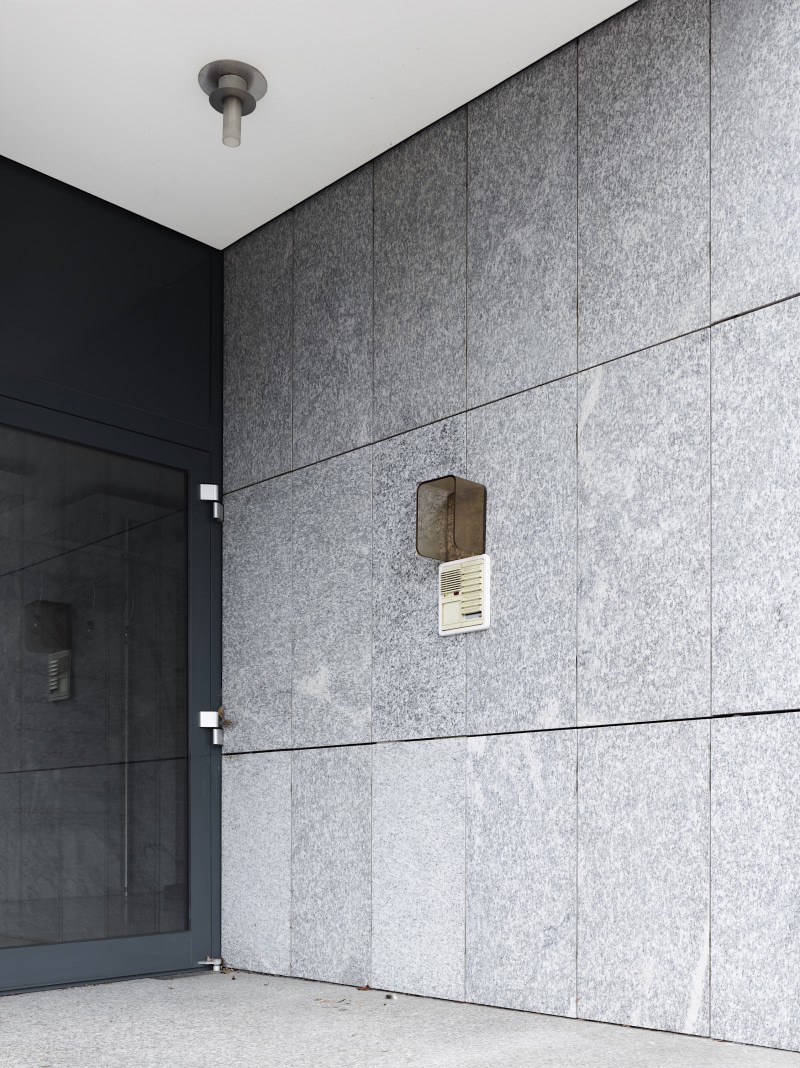
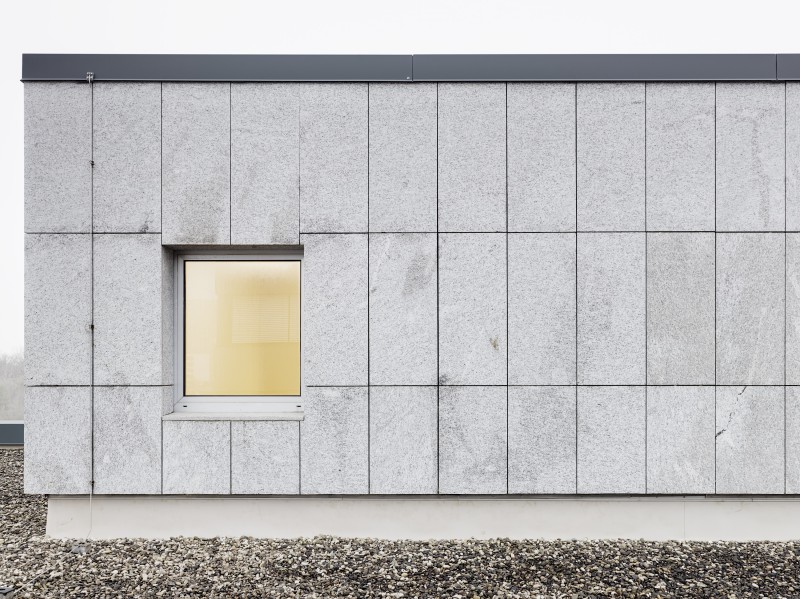
A vacant office building in Stuttgart: six stories, 3476 square meters in size, barely furnished with but a few tables and chairs remaining. The heat has been turned off and the lights left on. The office complex's interior is reduced to six features: the natural stone facade, marble flooring of the entrance, aluminium windows, electric blinds, two elevators and upscale carpeting. The above description suggests a seemingly mundane office building from the seventies, one that could be found in many German cities. So what is there to discover?
Photographers Simon Schnepp and Morgane Renou set out to this abandoned site amid the freezing cold of January 2013 to capture what had been left behind. "Ce qu'il reste" - what remains, is the title of a series of twenty images. These pictures depict fragments of an abandoned office building. One might think "dull, bland, dreary, barren - simply bureaucratic." Inside, however, its former occupants have left behind marks of their everyday office life. The empty rooms continue to tell stories, as revealed by Schnepp Renou.
No exterior shot of the building is provided to piece together the individual images as a whole. The story can only be read by pulling together the interior and exterior details. Doors and windows are left ajar, forming relationships between the various levels. In some instances, cable knots lie on the floor, the blackboard has never been wiped and someone has forgotten to turn off the lights. The signage, still hanging, guides the way through the building. Its former occupancy becomes visible again and again as a result of what is left.
These images draw the viewer into the building. Nevertheless, and owing in part to the artists' distinctive aesthetic, the space is not the focus - as is so often the case. The young photographers travel across the cities of Europe in search of untold stories, capturing images of buildings and urban space. Their work is devoted to architectural photography. Completeness is not their priority, adhering to individual buildings and getting very close to capture what is lost as you pass by. The smallest details, textures and overlooked nooks and crannies emerge. Their approach to light, the low horizon and depth leave an element of mystery to their images.
Consequently, none of the images in "Ce qu'il reste" attempt to reflect the space itself. On the contrary, the images are about corners, views and vistas. The camera penetrates a sleeping building and shamelessly captures its secrets and architecture. The photographers do not dramatize or alienate their subjects - they capture what they find and what awaits them. Various layers of light, reflections, doorways and walls thrust themselves on top of one another. Glass doors, partitions and blinds overlap and build depth in the images. Lights coming from a room in the back shine with mystery - what's happening around the corner? An open window reveals a world of purple, the elevator doors that won't open again. An abandoned table and chair are placed in front of a window. One can almost imagine the landlord still sitting here, keeping watch over the empty rooms and the life that once took place here. With the series, Simon Schnepp and Morgane Renou have successfully captured the depth of what at first appears to be a trivial building. A depth that would have most likely been overlooked in passing through. Through the camera, the building's stories reawaken, pulling the viewer right into the middle of it. The series has the effect of a crime scene walk-through - though this was merely a place of work.
Text: Kirsten Klingbeil, Bauwelt